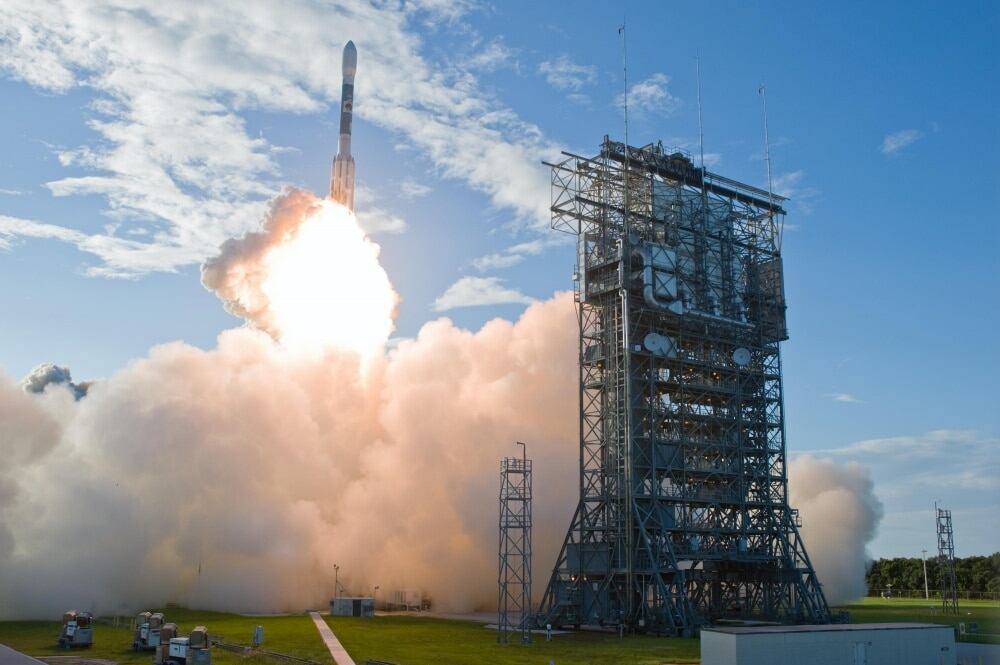WASHINGTON — Congress is intensifying its push for the Missile Defense Agency to focus money and near-term efforts to create a space-based sensor architecture and intercept layer for ballistic missile defense — all this after the agency came out with a fiscal 2019 budget request almost virtually absent of plans and programs to move ahead on such capabilities.
A space-based sensor layer’s persistent vantage point would provide hostile missile tracking from birth to death, a capability far beyond that of ground sensors. Missile defense experts believe a space-based missile defense architecture would dramatically improve the lethality of both homeland and regional missile defense, especially against emerging threats.
In its FY19 national defense authorization conference report, lawmakers want to see a more concerted effort from the MDA to make space-based missile defense a reality by authorizing additional funds, and particularly calling for plans that would begin development of a sensor architecture in FY19.
The House version of the defense authorization bill would have directed the MDA, and other major agencies and commands related to space efforts, to complete a plan and start development in FY19 for a space-based missile defense sensor architecture. But it would limit funds until a plan was presented to Congress.
The Senate bill required the MDA to begin development of the architecture unless the Missile Defense Review stated otherwise. The review is expected to be unveiled very shortly. The document’s release was predicted to drop late last year, but was delayed on several occasions.
RELATED

The Senate’s version also required the defense secretary to submit a report on progress and coordination of efforts on such a capabiltiy among MDA, the Air Force and the Defense Advanced Research Projects Agency.
The final bill mandates the MDA ensures its efforts to develop a space-based sensor architecture for missile defense that is compatible with DARPA’s work on the capability and would reduce the House’s proposed funding limitation to 15 percent, subject to what is decided as part of the FY19 defense spending bill.
The language builds upon what Congress requested for space-based missile defense development in its FY18 National Defense Authorization Act while providing a development starting line for the MDA to follow.

The language in the FY19 NDAA also mandates the development of the intercept layer for which Congress pushed in FY18. In that same fiscal year, the language requirement was contingent on what could be directed in the Missile Defense Review. This time, the legislation states the intercept layer will be developed, whether the review directs the activity or not.
MDA’s budget has consistently failed when it comes to advancing space-based missile defense despite rhetoric for years stating serious intentions to move forward proactively.
While the MDA is funding — in FY19 — the addition of two terrestrial-based radars in the Pacific, the space-based layer efforts are stagnant and relatively limited to three lines of effort. One is working to integrate a multispectral targeting system sensor on an unmanned aircraft to test the possibility of a future sensor.
MDA also will continue to fund the Space Tracking and Surveillance System demonstrators, but FY19 funding only sustains satellites as test assets.
The budget request also includes more work on the Space-based Kill Assessment payload, which is delayed by a year.
For some military leaders, this is not enough.
Gen. John Hyten, the head of U.S. Strategic Command, said earlier this year that the department has continued to look at space-based sensors. Some Pentagon leaders have thought the capability was not ready for prime time and that more studies should be done. But Hyten said there’s no reason to wait any longer, calling for the Department of Defense to rapidly move forward to counter emerging threats, especially those challenging to track, such as hypersonic missiles under development by peer adversaries China and Russia.
RELATED

The Pentagon appears to be making small steps on its own to develop space-based sensor capability since the release of the FY19 budget request in February, but it hasn’t made any notable steps toward development of an actual space-based intercept capability.
The DoD recently requested in a reprogramming document sent to Congress in June that $13.5 million in FY18 funds be shifted from elsewhere in its budget to complete multiple industry-based concept designs and mission architecture trade studies for a future ballistic missile-defense space-sensor capability.
The money would cover the completion of designs from nine industry teams as well as deeper analyses.
Jen Judson is an award-winning journalist covering land warfare for Defense News. She has also worked for Politico and Inside Defense. She holds a Master of Science degree in journalism from Boston University and a Bachelor of Arts degree from Kenyon College.








